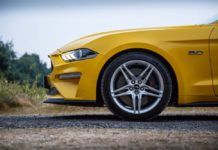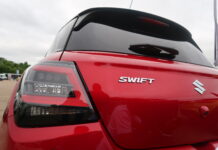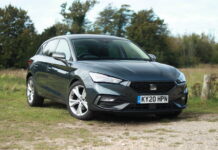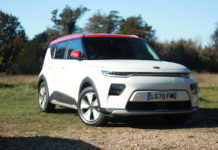Over the years, Renault has been renowned for making fun hot hatches that have represented a sizeable bang for your buck. Cars such as the Clio 182 and the Megane RS R26R often mentioned on the list of the best hot hatches to hit our roads in the last 15 or so years, but that was then, this is now. The most recent Clio RS hasn’t quite hit the highs of its predecessor, but can it’s bigger brother put things right?
Downsized engine, but more power
Unlike the majority of its rivals, the latest Renault Megane wades in to battle with a 1.8 litre engine – smaller than its predecessor. However, thanks to the wonder of turbocharging, it kicks out a healthy 280hp with 390Nm of torque. Thankfully, Renault has seen sense, and is offering a 6-speed manual gearbox for this model as well as offering a 6-speed auto, unlike the Clio RS, which is still auto only (D’oh!).

For purists, the manual will be to go for, especially as it’ll add more involvement and less cost, plus the automatic is no faster. Both gearboxes will help the Megane RS pedal its front wheels to 62mph in 5.9 seconds and the manual tops out at 158mph whereas the auto trails a little behind at 155mph. Its power is competitive with its rivals, but it’s worth noting that the Honda Civic Type R.
Yeah, but that costs more money
Indeed it does, but I would like to point out that the Megane RS tested here is £34,345, thanks to some optional extras. It has a fair few, but the one that’s worth the most amount of attention – apart from the £1,300 Volcanic Orange paint – is the Cup Pack (£1,500). For of those you among the uninitiated, the Cup Pack is good news for those looking take this car on track.

This is because you get a limited slip differential for better traction in the corners, stiffer springs and dampers, a beefier anti-roll bar, and last but not least, you get red brake calipers, which don’t add anything to performance, but I suppose they look pretty. At this point you’ll be asking me about comfort, begging me to tell you it’s “not too bad”, but I’m afraid you’ll have to wait as I’ll get on to that in a bit.

On top of the paint and the track-inspired hardware, this car also comes with an Alcantara Pack (£1,200), Alcantara steering wheel (£250), 19″ alloys (£950), 8.7″ portrait touchscreen (£300), BOSE sound pack (£800), Visio system (£250) and Renault Sport Monitor (£300). To be fair, you don’t have to have those features, and if you’re happy to sacrifice some goodies, this car will cost a more reasonable £27,495.
Don’t think you’ll have a car as well equipped as a cave if you go for the base model, though. In fact, you’ll get quite a few features, including 7″ touchscreen, Bluetooth, DAB radio, smartphone connectivity, navigation, dual-zone climate control, rear parking sensors, cruise control, keyless entry among other features.
Enough of that, what’s it like to drive?!
Ah yes, after all, that’s what you really care about, isn’t it? Start up the 1.8 engine and you’ll be met with a satisfying burble, a burble I wasn’t quite expecting, to be honest. Disengage the well-weighted clutch and you’ll soon find yourself admiring the short, mechanical gearchange as you slot it in 1st. It’s not quite as a slick as a Type R, but it’s certainly not a million miles off.
As I set off on my short drive, I find the nearest straight and give the throttle a bit of encouragement. It certainly doesn’t hang about, and Renault’s 0-62 claims feel pretty spot on, although the acceleration isn’t quite as exhilarating as the Honda, although the RS does make a better noise in the process. First impressions then, are good.
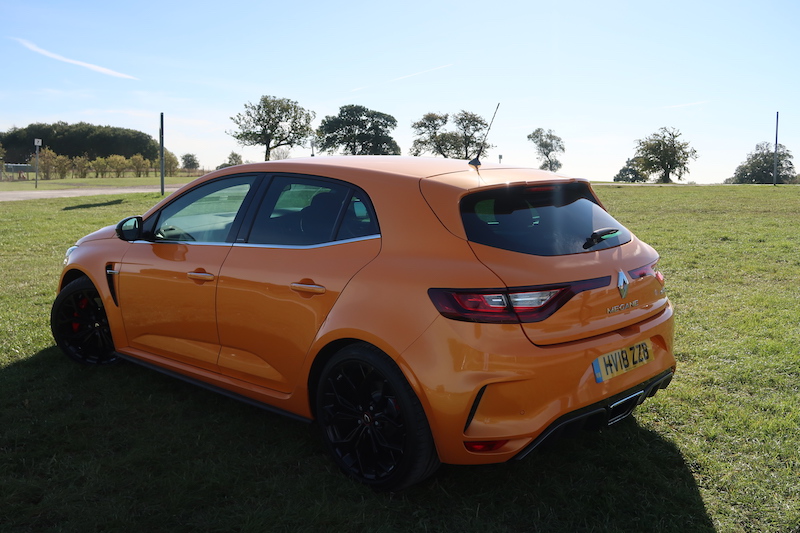
As well as the new engine, which is shared with the Alpine A110, the RenaultSport team has been hard at work to throw as much new stuff in to this car as much as possible. One of the highlight features is something called 4Control. In short, this means that this car offers four wheel steering, the only car to do in its segment.
At speed, the rear wheels steer with the front wheels to give better stability and at lower speed the rear wheels steer the opposite way to give better agility. I’ll admit, at first I couldn’t really notice, which some of you may be shocked by, but as I drove the car more, it became more noticeable.

As well as the trick steering, the new Megane RS also gets five driving modes; Comfort, Neutral, Sport, Race and Perso, which acts as an individual mode. There’s no adaptive dampers though – rally-inspired hydraulic compression stops are used instead – so the modes will have no effect on ride. I spent my time in ‘Sport’ mode, because why wouldn’t you? Performance is good, and you get more noise as well, which really helps to add to the experience.
Ok, but does the cup chassis firm enough to break your back in two?
Like styling, comfort can be quite a subjective thing, and I’m sure you’ve read other reviews stating that the Cup Chassis is too firm for everyday usage. Well, let me give you my two cents. Is it firm? Yes it is, and unless you’ve got no sense of feeling, there’s no denying that. You will feel every bump and the car never feels ‘relaxed’. It’s definitely a car you’ll want to avoid potholes in, that’s for sure.

However, does that mean that this car needs to relegated to track use only? No, not at all. As much as the ride is firm, and you’ll never really be settled in your seat, I’m willing to put my neck out to state you should be able to use this car daily with no real issues. It helps that the seats are comfortable, although I find the side bolstering didn’t fully support my slim frame.
Does it handle well?
In a word, yes. Thanks to sticky tyres, the Cup Chassis, and the 4Control steering the Megane RS handles very well in the bends. The steering is direct and well weighted, the brakes are strong, and there is a very good amount of grip. Like its ancestors, the new Megane RS is a real joy in the corners, but if I’m going to be critical, the Type R still feels more impressive. The Type R is a lighter car as well. In fact, the Megane RS is a little bit of a heffalump and is heavier than most of its rivals.

It’s a hatchback though, so can it still do the practical stuff?
I won’t lie, the Megane RS is not the most practical car in its class, but it’s not absolutely dire. Rear space is not as ample compared to its rivals, and I found both legroom and headroom tight for my 6’2″ frame. Therefore, the space may be best avoided for taller adults, but on the plus side, there’s plenty of room in the front, and thanks to a boot which offers 384 litres, it’s generous for its class.
Will it cost a lot to run?
It’s a performance hatch, therefore running costs will be higher compared to cooking models, of course. However, on a combined run, the Megane RS can offer up to 39.2mpg and it emits 163g/km of CO2, meaning you’ll pay for £515 for the first year of VED. Younger buyers may struggle for insurance, as this car commands an insurance group of 35.

Final thoughts
The Megane RS is a car I’ve been desperate to try for a long time, especially as there has been a lot of buzz about it. On my short – but sweet – drive it certainly impressed, but it didn’t quite ‘wow’ me as much as the Honda Civic Type R, although I will concede it’s a better looking car. Mind you, if you forgo options, you’ve got a car that is more around the price point of a Hyundai i30N Performance, a Peugeot 308 GTi or a VW Golf GTi, and guess what? The Renault is more powerful than all three of them.


